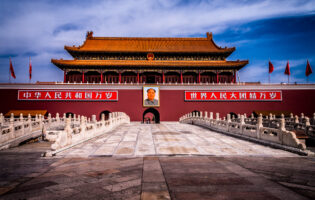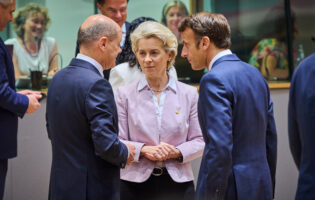
CC-BY-4.0: © European Union 2019 – Source: EP
Austria’s Vote: An EU Trend with an Alpine Twist

Peter S. Rashish
Vice President; Director, Geoeconomics Program
Peter S. Rashish, who counts over 25 years of experience counseling corporations, think tanks, foundations, and international organizations on transatlantic trade and economic strategy, is Vice President and Director of the Geoeconomics Program at AICGS. He also writes The Wider Atlantic blog.
Mr. Rashish has served as Vice President for Europe and Eurasia at the U.S. Chamber of Commerce, where he spearheaded the Chamber’s advocacy ahead of the launch of the Transatlantic Trade and Investment Partnership. Previously, Mr. Rashish was a Senior Advisor for Europe at McLarty Associates, and has held positions as Executive Vice President of the European Institute, on the Paris-based staff of the International Energy Agency, and as a consultant to the World Bank, the German Marshall Fund of the United States, the Atlantic Council, the Bertelsmann Foundation, and the United Nations Conference on Trade and Development.
Mr. Rashish has testified on the euro zone and U.S.-European economic relations before the House Financial Services Subcommittee on International Monetary Policy and Trade and the House Foreign Affairs Subcommittee on Europe and Eurasia and has advised three U.S. presidential campaigns. He is a member of the Board of Directors of the Jean Monnet Institute in Paris and a Senior Advisor to the European Policy Centre in Brussels. His commentaries have been published in The New York Times, the Financial Times, The Wall Street Journal, Foreign Policy, and The National Interest, and he has appeared on PBS, CNBC, CNN, and NPR.
He earned a BA from Harvard College and an M.Phil. in international relations from Oxford University. He speaks French, German, Italian, and Spanish.
__
Austria’s parliamentary election on September 29 has mirrored one key result of the vote for a new European Parliament held in May of this year: the rise of unconventional center and left parties.
While there are aspects of Sunday’s results that are Austria-specific rather than Europe-wide, the strong showing by the left-liberal Greens and center-liberal Neos confirms the increasing attraction of parties that seem modern, take clear stands on the issues, and avoid resorting to populism of either the left- or right-wing variety. Between them, the Greens and the Neos took 22 percent of the vote, more than either the center-left Social Democrats or the right-wing populist Freedom Party.
Because of the strength of the Greens and the Neos, the night’s big winner, 33-year-old ex-chancellor Sebastian Kurz of the conservative People’s Party, will most likely try to form a coalition with one or both of them. That would mark a major break with political tradition in Austria, which has been defined mostly by grand coalitions between the Social Democrats and the People’s Party or most recently (and once before in the early 2000s) by a People’s Party-Freedom Party coalition.
Kurz’s victory was impressive—almost 38 percent of the vote compared to the 21 percent won by his party’s family at the European level in May. His success can be explained in part by his political communication skills and in part by Austrian circumstances that are not present elsewhere in the EU.
For three decades the Alpine republic has lived with a relatively strong right-wing populist force (the Freedom Party) that has espoused nationalist views, including a hostility to immigration. Kurz was able to adopt some of the same immigration-unfriendly positions while maintaining an overall pro-EU line. He was handsomely rewarded for those political acrobatics.
Kurz also had a bit of luck. The Freedom Party has been mired in scandal after its former chairman, Heinz-Christian Strache, was secretly filmed soliciting political contributions in return for various business-related quid pro quos. The Freedom Party’s support sank from 26 percent at the last election to 16 percent this time around. Half the voters it lost opted for Kurz’s list while half decided not to vote at all.
While it is important not to read too much into political developments in a small, neutral country like Austria, its recent election does confirm a trend visible across the Danube in Germany. While attempts after the 2017 election there to create a coalition among Chancellor Merkel’s Christian Democrats (the German counterpart of Kurz’s party), the liberal Free Democrats, and the Greens ended in failure, if something similar were cobbled together in Vienna that would put wind in the sails for a second try in Berlin in 2021.
A prospective three-way tie-up in Austria has already been dubbed a “Dirndl coalition” because of the turquoise, pink, and green colors of the parties involved. A German version would have a less folkloric name—“Jamaica” because that country’s flag matches the colors of the German parties—but would likely be just as challenging to manage.








